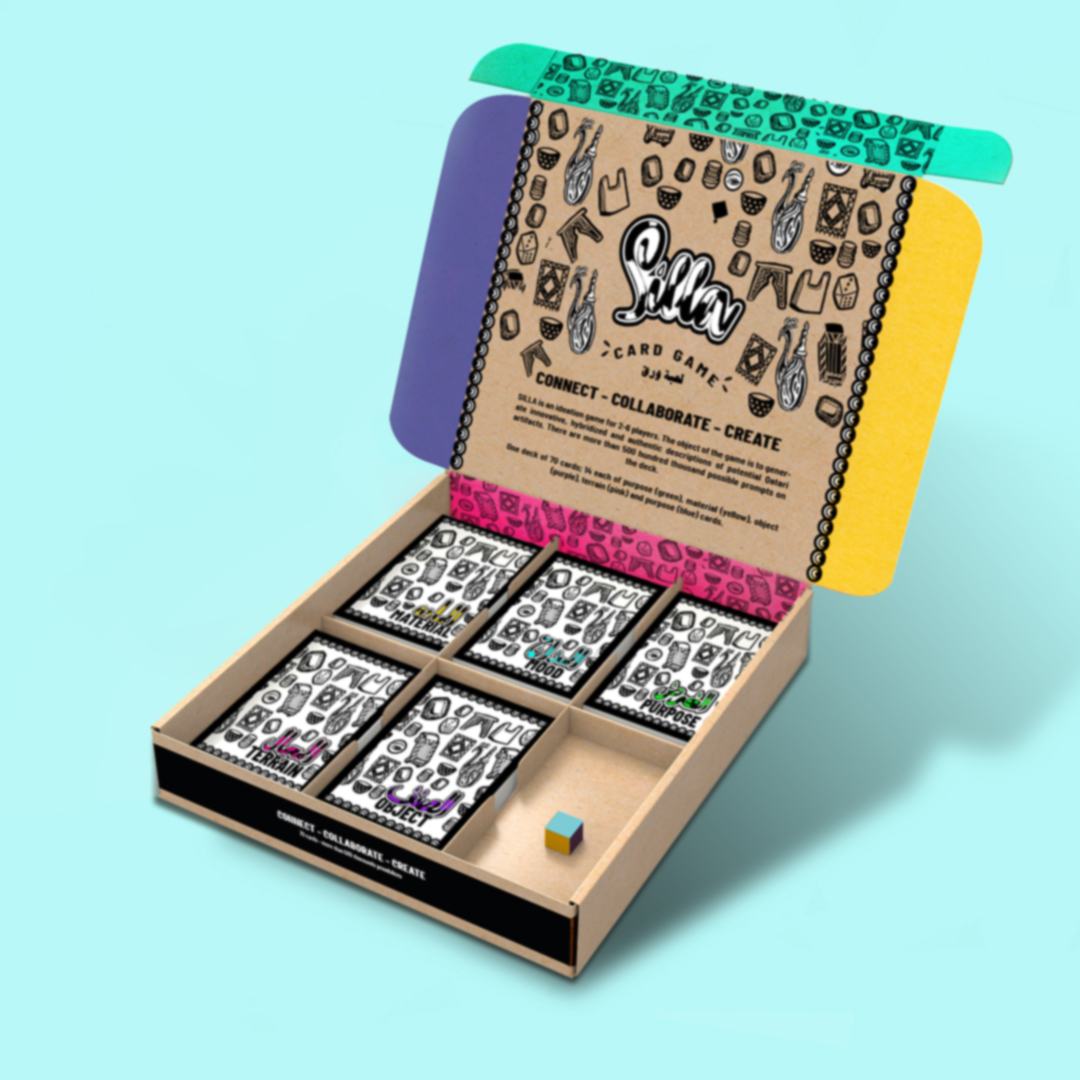- Academics
- Admissions & Enrollment Services
- Research
- Academic & Creative Spaces
- Strategic Partnerships
- Our Impact
- Student Affairs
- Campus & Community

It’s a puzzle that piqued VCUarts Qatar MFA student Asma Derouiche – and led to her Master’s thesis
Can an artifact be considered authentic to a country if it is not made using local materials and manpower? For someone who prides herself on her clarity of thought, Asma Derouiche wasn’t comfortable not knowing.
During her first year of studies at VCUarts Qatar, the Master of Fine Arts in Design student was on one of her occasional trips to Souq Waqif in Doha.



A Tunisian who hailed from a village renowned for its local artisans, she found herself drawn to the little shops that sold Qatari artwork and crafts.
“These are 100 percent authentic Qatari art and craft,” she was told by the shopkeeper. Keen to know more, she enquired about the resources that were used to create it – only to learn that the raw materials used were not sourced from Qatar, nor was the artisan a Qatari.


“Growing up in Tunisia I was used to a homogenous culture where the word “authentic” was used to describe an object that was made by local artisans using local resources, and inspired by indigenous tradition and culture,” says Derouiche.
“What I saw in Souq Waqif puzzled me. I couldn’t understand how a handicraft or object could be called authentic to a country, unless most of the material and manpower involved were locally-sourced.”
Derouiche was so intrigued by this contradiction that she decided to follow up on it. After further visits to Souq Waqif, and conversations with local artists there, she realized that what she was exploring – the question of authenticity – was something that she would like to delve into for her Master’s thesis.
Given the green light to proceed by her faculty advisors, Derouiche began questioning shopkeepers, and local and expatriate artisans on the subject that had piqued her interest.
Over the next few months, her investigation deepened, and she systematically researched the background to her “authentic puzzle”, as she had come to call it. And the more she dug, the more she realized that her understanding of the word “authentic” would be challenged.
“I’ve always been comfortable with the unexpected,” she says. “But it took me a few weeks to accept what I myself had unearthed: that where Qatar was concerned, “authentic” meant using available materials and manpower – irrespective of country or culture – to replicate the country’s antiquity and traditions.
“In a way, it resonates with the identity of the country. Qatar is cosmopolitan and welcoming, and it seemed to adopt this same outlook towards preserving its heritage – a mix of cultures contribute to the “authentic” art and crafts sold in Souq Waqif. It’s the new authentic.”
If that inadvertent discovery wasn’t startling enough, Derouiche stumbled on another aspect: expatriate artisans in Souq Waqif, due to their specific work demands, did not have the sort of creative leeway that they had back in their respective countries, and often felt stifled. As her mind flicked back to the creativity of the artisans in her home village in Tunisia, she thought of a way to fix this.
“In my conversations with Souq Waqif’s artisans, I sounded out the idea of teaming them up with designers from VCUarts Qatar to create Qatari artifacts,” explains Derouiche.
“Likewise, I approached faculty in my university – who were designers themselves – and asked them if they would be willing to collaborate with these expatriate artisans. Much to my delight, both parties agreed.”
Asked about the success of the project, Derouiche beams as she answers. “When I started out, I had no idea that my plan would run smoothly, and that I would enjoy it so much.
“Proof of the collaboration between the Souq artists and faculty designers, can be seen in the unusual twists they’ve applied in their interpretation of design – such as the geometric design of a leather prayer rug.
“In fact, riding on the success of this project, I will be launching an initiative at Msheireb – a platform where designers and artists from the wider community can collaborate to create similar artifacts and artwork.”
She notes how VCUarts Qatar gave her the confidence to pursue the puzzle – and opened her mind to challenge her own convictions.
“I’ve worked on several projects during my studies – including an interesting reinterpretation of a typical Qatari wooden bench – and the faculty have been incredibly supportive of my ideas. They taught me the value of having an open mind, especially when it comes to art and design.
“I joined VCUarts Qatar because I wanted to be authentic in every sense; I wanted to have my own style – my own approach to art and design. I never thought that I would end up accepting that authentic could also mean embracing other cultures to preserve your own.”
See more of Asma’s work on the BFA + MFA Online Show website at http://vcuqbfamfa.com

